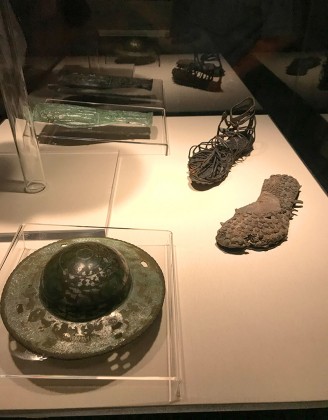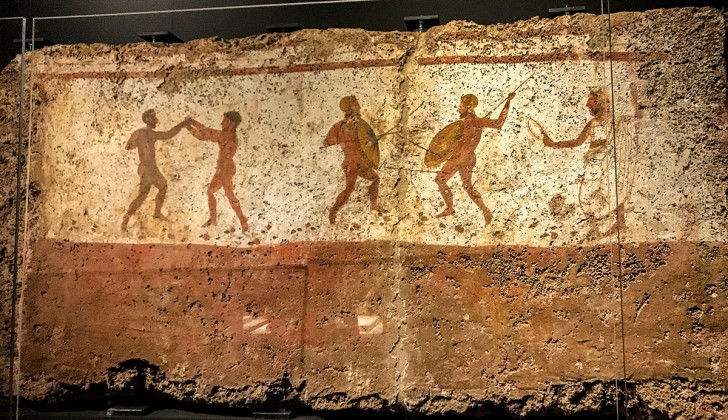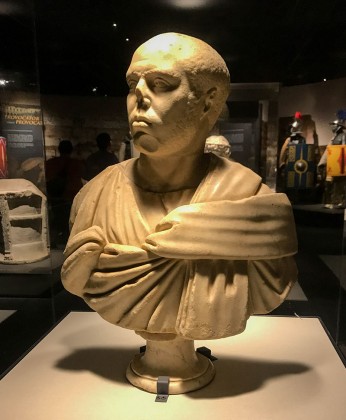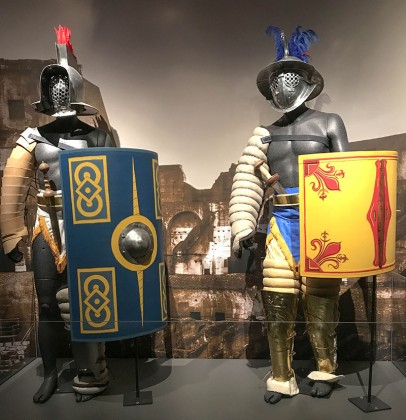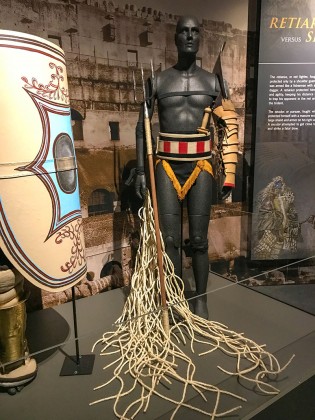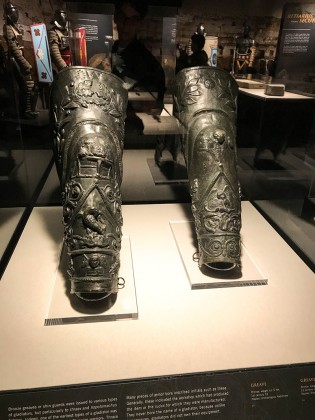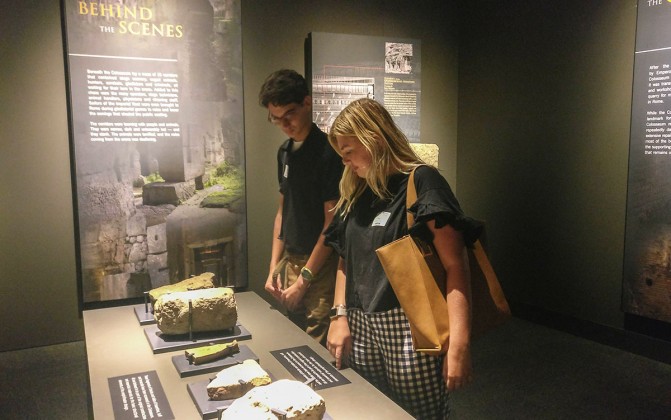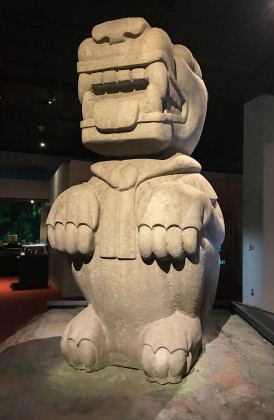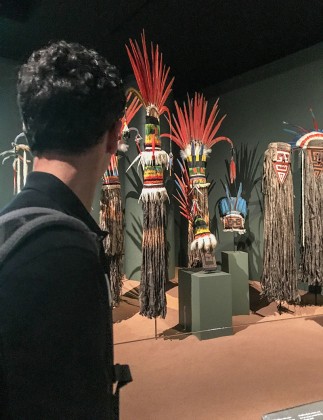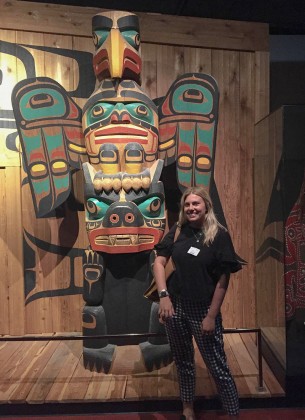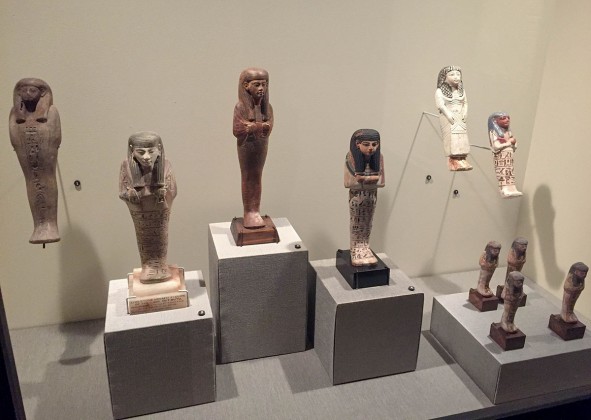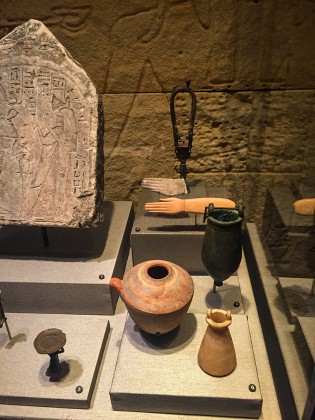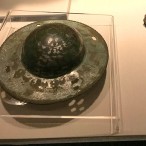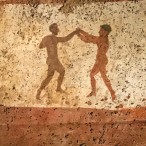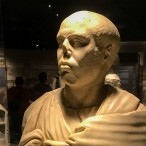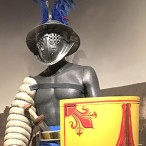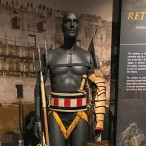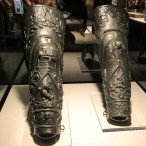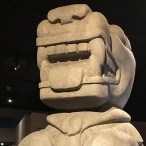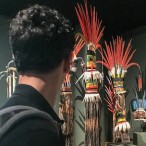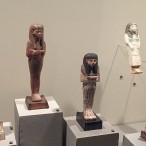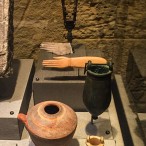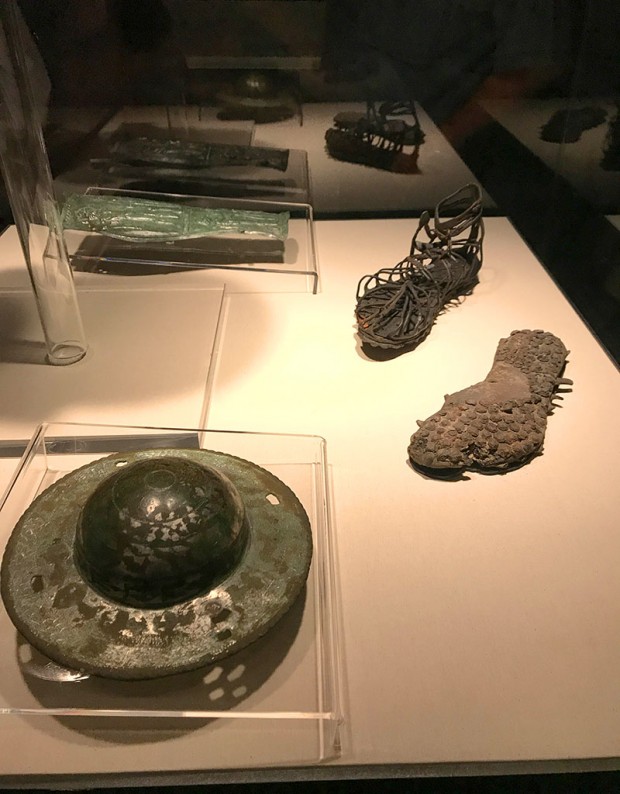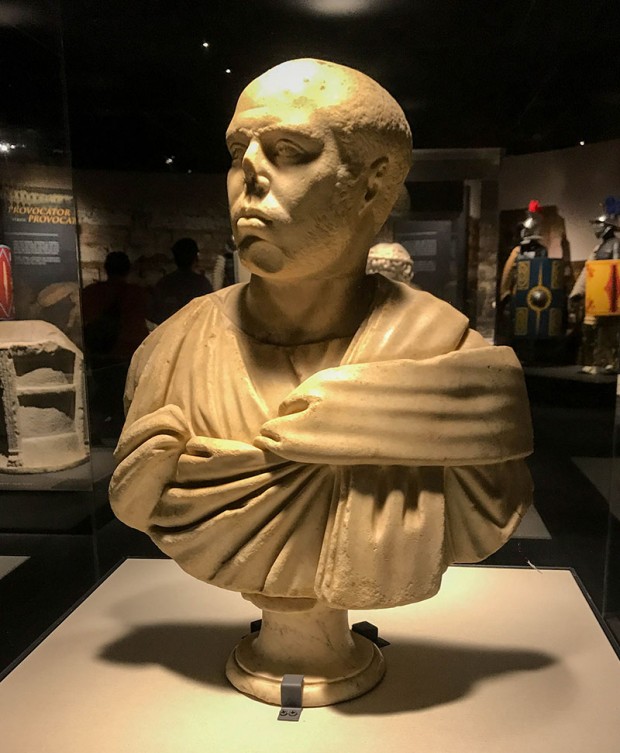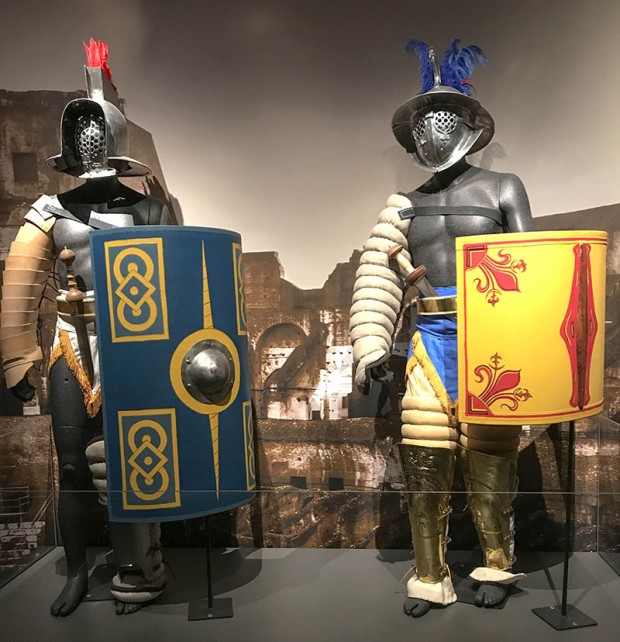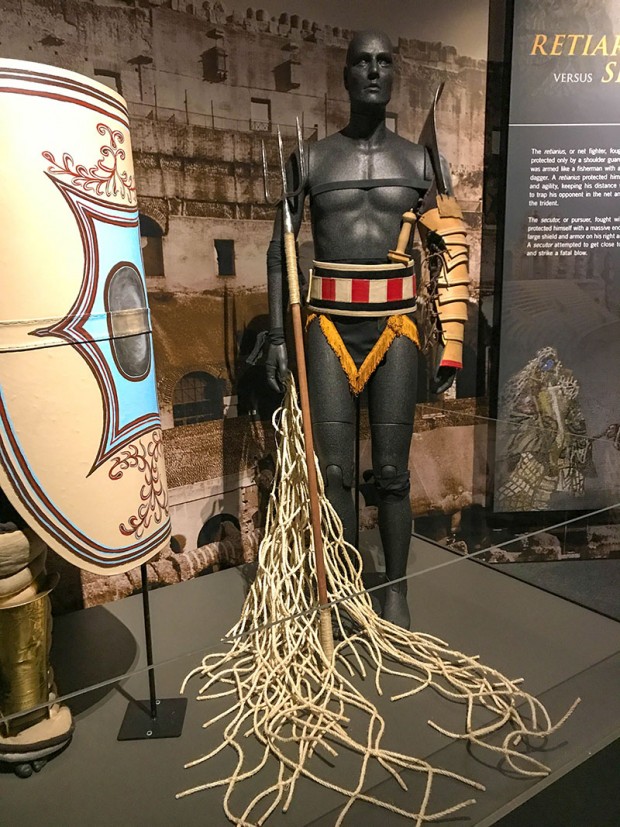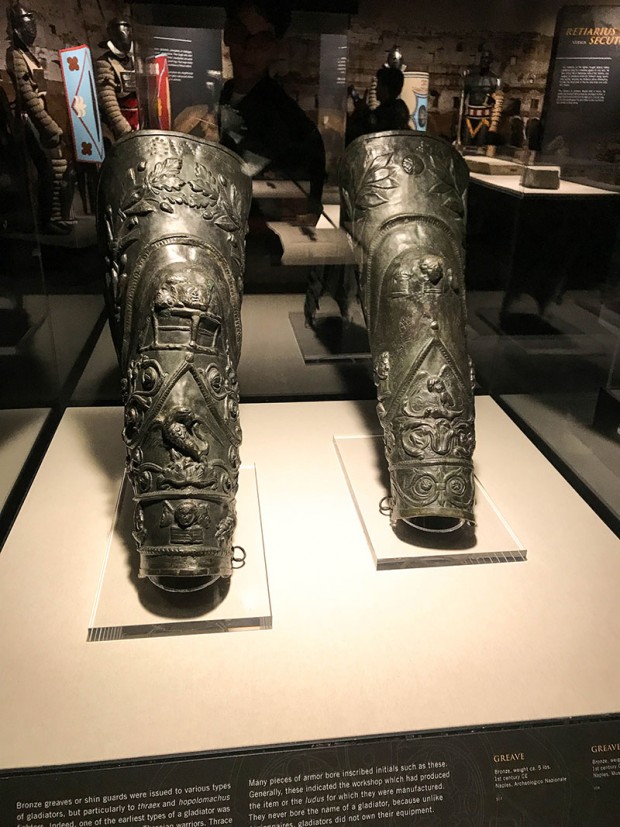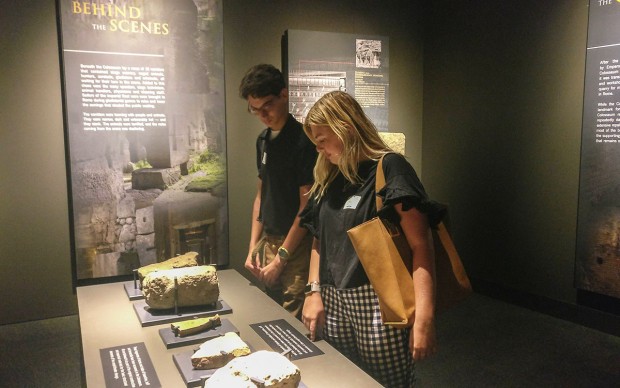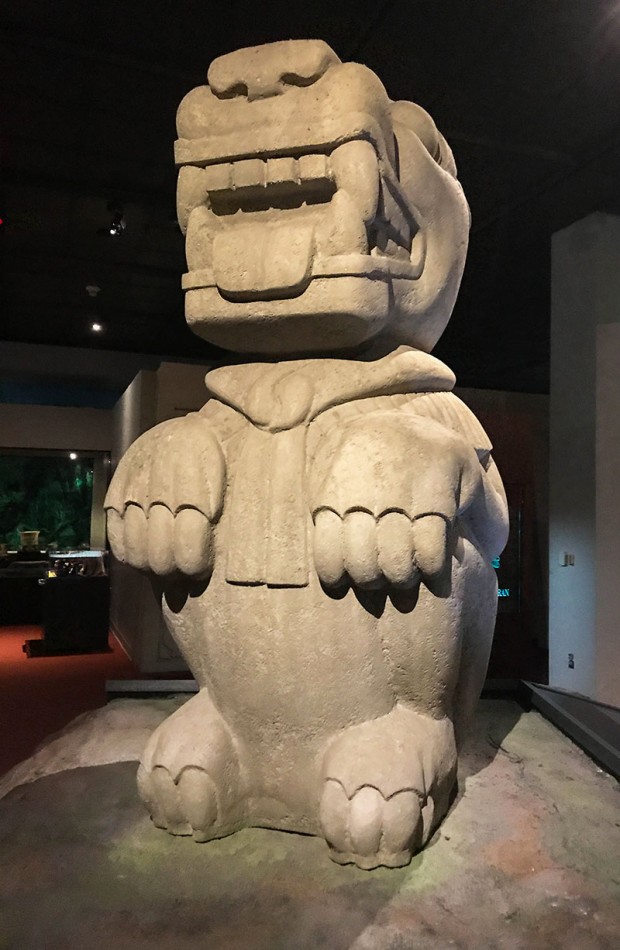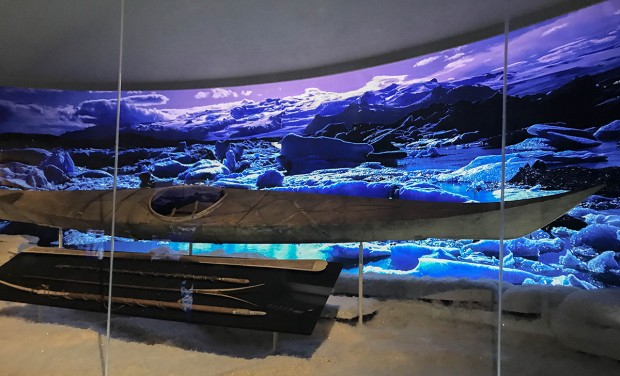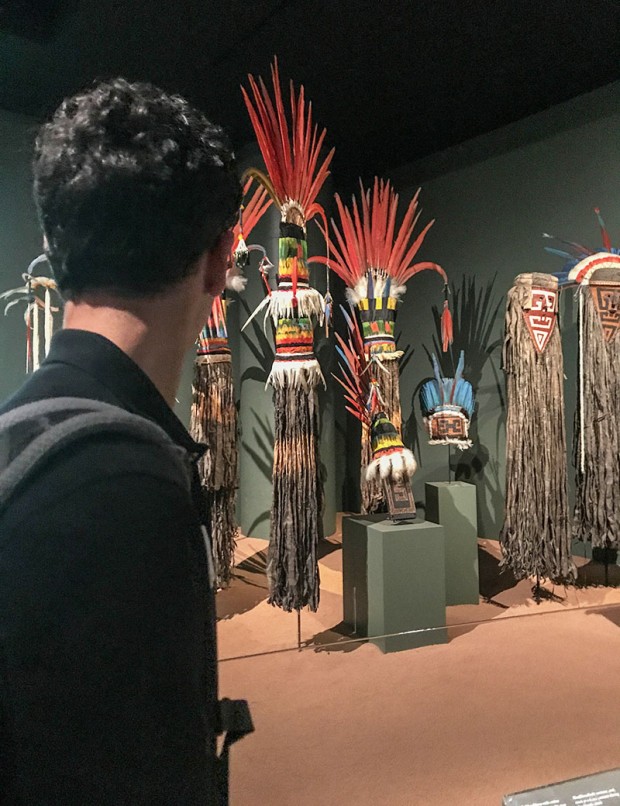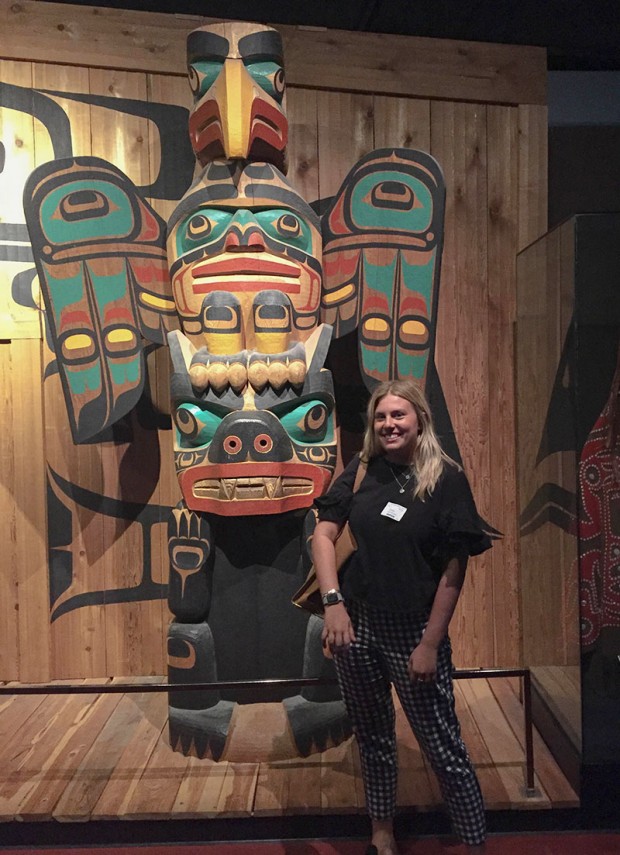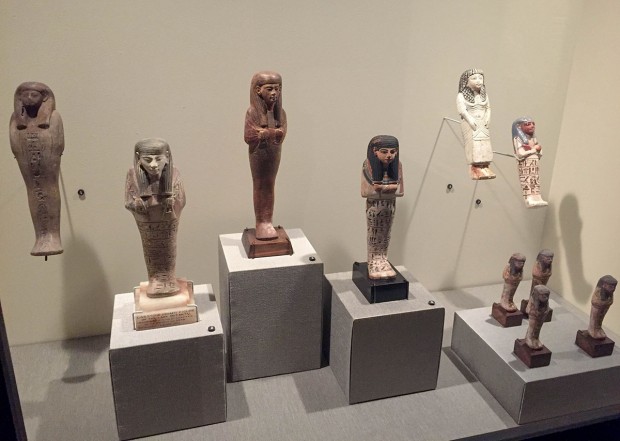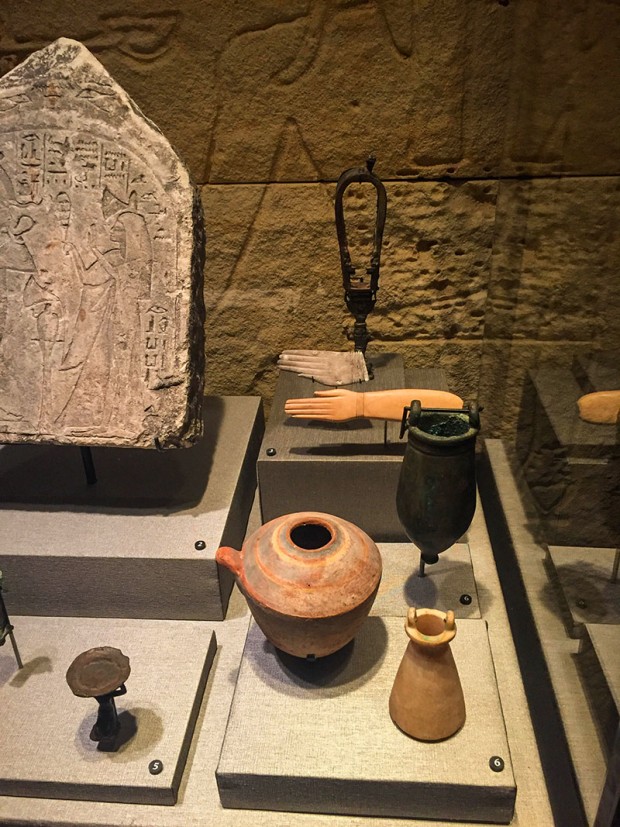Exploring 'Gladiators: Heroes of the Colosseum'


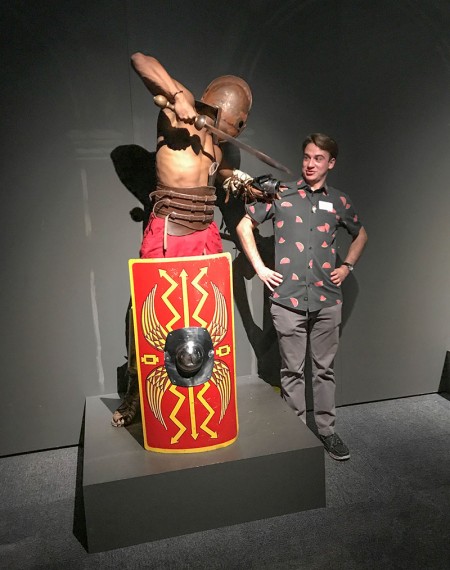
Buzz intern Trevor Schneider standing in front of the gladiator guarding the museum exhibit entrance. (Photo: Jordan Miller-Mandel)
Buzz interns Eli Maierson, Jordan Miller-Mandel and Trevor Schneider went to see the Gladiators exhibit at Houston Museum of Natural Science to test their knowledge of ancient times and see what the hype was all about.
The Gladiator exhibit caught our eyes as soon as we entered the third floor. A man, fully dressed in gladiator gear, stood on a podium completely still. His stillness led us to believe that he was a wax figurine, but he proved us wrong when he held his sword to Buzz summer intern Trevor Schneider’s throat.
The first few rooms of the exhibit focus exclusively on the Colosseum, which, as it turns out, is pretty similar to the old Astrodome. Both stadiums sat about 60,000 people, both sold food inside the building and both sold souvenirs. While a typical Astro game souvenir might be a bobblehead of a player or a hat, souvenirs of gladiator fights included small, metal figurines of fighters and oil lamps in the shape of helmets.
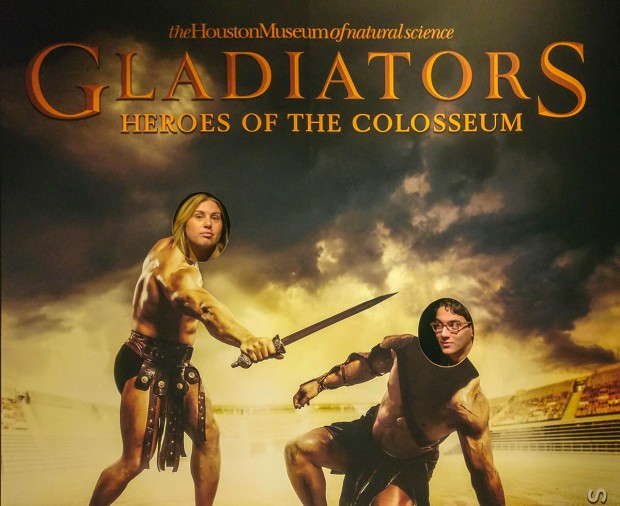
Buzz interns Jordan Miller-Mandel and Eli Maierson putting their gladiator skills to the test. Wonder who the winner is here? (Photo: Trevor Schneider)
Walking through the exhibit and catching bits of information from nearby tour guides, we learned that there are 18 different types of gladiators, with five on display at the museum. Battles did not always feature the same type of gladiator, as certain combinations proved more interesting. One popular battle was the Retiarius against the Secutor. The Retiarius was quick with little armor, and used a trident and a net to ensnare than attack his opponents. The Secutor was heavily armored, but moved slowly and had limited vision. Essentially, it was a battle of agility versus brute strength.
Eli Maierson:
My favorite part of the exhibit were the gaming pieces. Among the ruins of the Colosseum, archaeologists have found dice and sheep’s vertebra, both used to gamble during the battles. I found it fascinating that even ancient people bet on sports, and that two millennia later, not that much has changed.

This is one of the first pieces of evidence of gladiator battles. The picture depicts a gladiator battle and the man on the right is offering the crown to the winner. (Photo: Jordan Miller-Mandel)
Jordan Miller-Mandel:
My favorite part of the exhibit was toward the end of it. There was a virtual reality headset that you could put on and tour the Colosseum, see the gladiators fight, the different styles they used to fight and how tactile they were when they fought. It gave me an appreciation of their lives and how they were almost forced into this lifestyle of fighting. With sounds and great graphics, visitors are transported to Rome in 2nd century A.D.
Trevor Schneider:
Driving to Houston Museum of Natural Science on Thursday morning, I didn’t foresee the near-death experience that awaited me. Yet a simple photo-op with a gladiator statue* ended with a sword to my throat and terror in my heart. As it turned out, the man in the gladiator suit was a masterful actor, fooling me into waltzing on over to him without a care in the world. Though his lightning-fast strike scared the bejeezus out of me, it woke me up more effectively than any number of Starbucks lattes - and for that, I am forever thankful.
*or so I thought
Gladiators: Heroes of the Collosseum is open at Houston Museum of Natural Science through Monday, Sept. 4. See more photos from the Gladiators exhibit below, plus a few images from other exhibits currently at HMNS.
Want more buzz like this? Sign up for our Morning Buzz emails.
To leave a comment, please log in or create an account with The Buzz Magazines, Disqus, Facebook, or Twitter. Or you may post as a guest.


